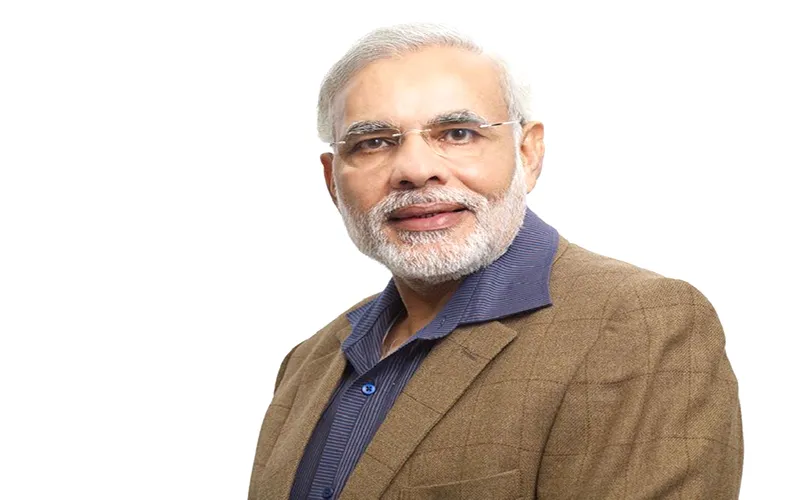-
CENTRES
Progammes & Centres
Location
As the Modi government brings in a renewed push to India's Look East policy with an "Act East" policy, Myanmar's geostrategic position becomes all the more important for India to put the necessary connectivity links with the country and the wider region.

Indian Prime Minister Narendra Modi is beginning his three-country tour on Tuesday. His first stop is Myanmar, where he will be participating in the ASEAN and East Asia Summits (EAS) in Nay Pyi Taw. Modi will meet Burmese President Thein Sein as well as opposition leader Aung San Suu Kyi.
Modi's visit to Myanmar is significance for two reasons. First, this is his first visit to the country as Prime Minister and second, he debuts in the multilateral EAS. The visit gives Prime Minister Modi an opportunity to spell out his vision on India-Myanmar bilateral relations as also India's wider interests when he meets other regional leaders at the EAS.
Myanmar is at a critical stage in its reforms process that began in 2011 and the country is gearing up for a general election next year. Impressive progress has been made in bringing about change in political and economic sectors. There are, however, several daunting challenges that confront the country. The Modi government had earlier expressed its support to Myanmar's democratisation process during External Affairs Minister Sushma Swaraj's visit to the country in June and Prime Minister Modi will reiterate the same position.
Even so, whether in dealing with religious radicalism or military offensives in the ethnic minority areas of Myanmar, the role of the government has come under both domestic and international scrutiny. If the Myanmar government under President Thein Sein has won international support on several reform initiatives including release of political prisoners, ethnic peace process, judicial reforms, opening up of the economy, and so on; scepticism remains, both inside and outside the country.
It is at this crucial time that Prime Minister Modi needs to reassure Myanmar of all possible help from India in its move towards democratisation at its own pace, at the same time, re-emphasise the importance of inclusiveness in diverse societies for the success of democracy. Encouragement from the international community at this juncture is crucial as still there are forces, both political and social, whose actions could adversely impact on the reform process.
The growing cordiality in India-Myanmar bilateral relations in the recent years has been reflected in the frequent exchanges of high-level visits. Modi's current visit will be the third by an Indian Prime Minister to visit Myanmar in three years. Former Prime Minister Manmohan Singh visited the country in earlier in March this year to attend the BIMSTEC Summit. Earlier in May 2012, Manmohan Singh undertook a bilateral visit to Myanmar. In the same year, Myanmar President Thein Sein visited India in December. The two countries reached several agreements during these visits and Prime Minister Modi will use his visit to review the progress of the various bilateral projects that was underway.
As part of his emphasis on re-connecting with the neighbourhood, bringing connectivity as the top priority during his meetings with Myanmar leaders is of urgent need. In India, we often say Myanmar is our "gateway" to the East. Against the rhetoric, the existing connectivity between the two neighbours remains much to be desired. Today, there is only one direct flight between Kolkata and Yangon that operates just thrice a week; there is no direct shipping links; and although road connectivity exists, we are yet to have cross-border passenger or goods transport services. With long land and maritime boundaries, surely, the neighbours are yet to take full advantage of geography.
This is not to say that there are no efforts to increase and improve connectivity between the two neighbours. A recent positive development was the agreement to launch a weekly bus-service between Mandalay in central Myanmar and Imphal in Manipur in June, soon after the Modi government came to power. There is need to push for operationalisation of the service at the earliest possible.
India had earlier agreed to undertake the task of repair and upgradation of 71 bridges on the Tamu-Kalewa friendship road, the Kalewa-Yargyi road segment and the Yargyi-Monywa stretch. Progress in these segments is important as they form part of the India-Myanmar-Thailand Trilateral Highway that is expected to be completed by 2016.
In maritime connectivity, the joint study group on shipping was set up to examine the commercial feasibility of direct shipping links. India's interest to strengthen maritime connectivity with Southeast Asia in the recent years is a good opportunity for India to involve itself the Dawei port in southern Myanmar, a port that might emerge as main sea link between India and Southeast Asia and the main point of proposed India-Mekong Economic Corridor.
Although reports on regular chartered flight services between Mandalay and Imphal and direct flights between New Delhi and Yangon have been emerging since the bilateral air service agreement was signed between the two countries in 2012, no new flight services has yet started. A joint working group was set up to explore the feasibility of rail connectivity between the two neighbours. However, apart from the other challenges, India needs to firm up rail project in its border states if these railheads were to link with Myanmar.
An important sea and inland-waterways project of India and Myanmar is the Kaladan Multi Model Transit and Transport project facility that will link India's Northeast to the Bay of Bengal. There is need for ensuring that a strategic project such as this gets completed without any further delay. Besides, important regional trans-national connectivity projects that will link India with the rest of Asia passes through Myanmar, including the Bangladesh-China-India-Myanmar (BCIM) Economic Corridor and the India-ASEAN connectivity.
As the Modi government brings in a renewed push to India's Look East policy with an "Act East" policy, Myanmar's geostrategic position becomes all the more important for India to put the necessary connectivity links with the country and the wider region. Needless to say, greater trade and commerce, tourism, people-to-people contacts depend on improved and easy connectivity.
(The author is a Fellow at Observer Research Foundation, Delhi)
The views expressed above belong to the author(s). ORF research and analyses now available on Telegram! Click here to access our curated content — blogs, longforms and interviews.

K. Yhome was Senior Fellow with ORFs Neighbourhood Regional Studies Initiative. His research interests include Indias regional diplomacy regional and sub-regionalism in South and Southeast ...
Read More +